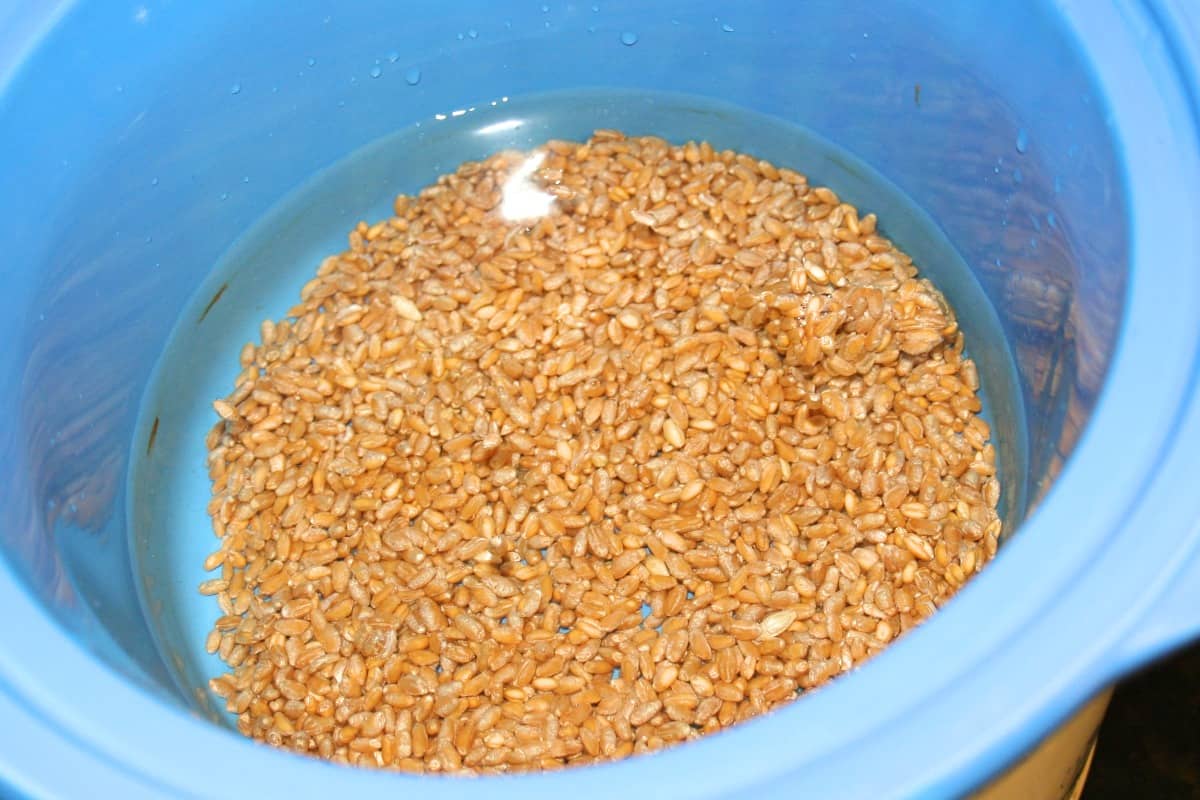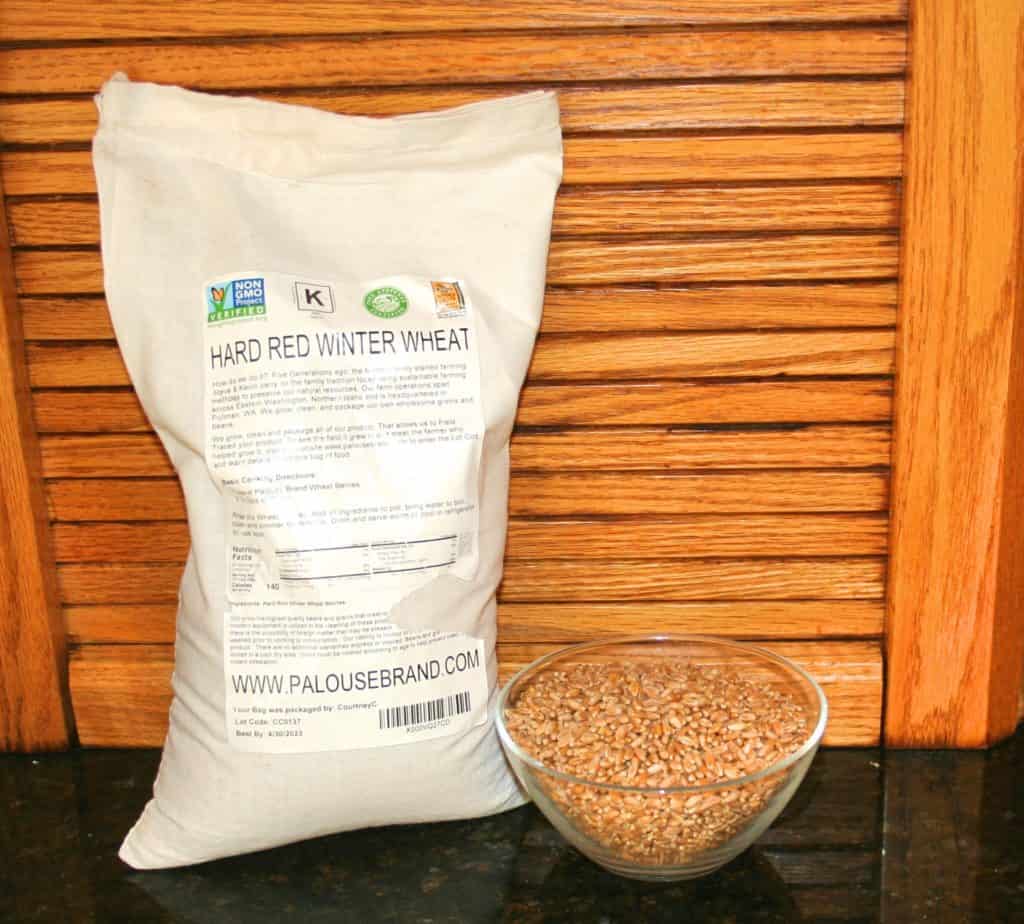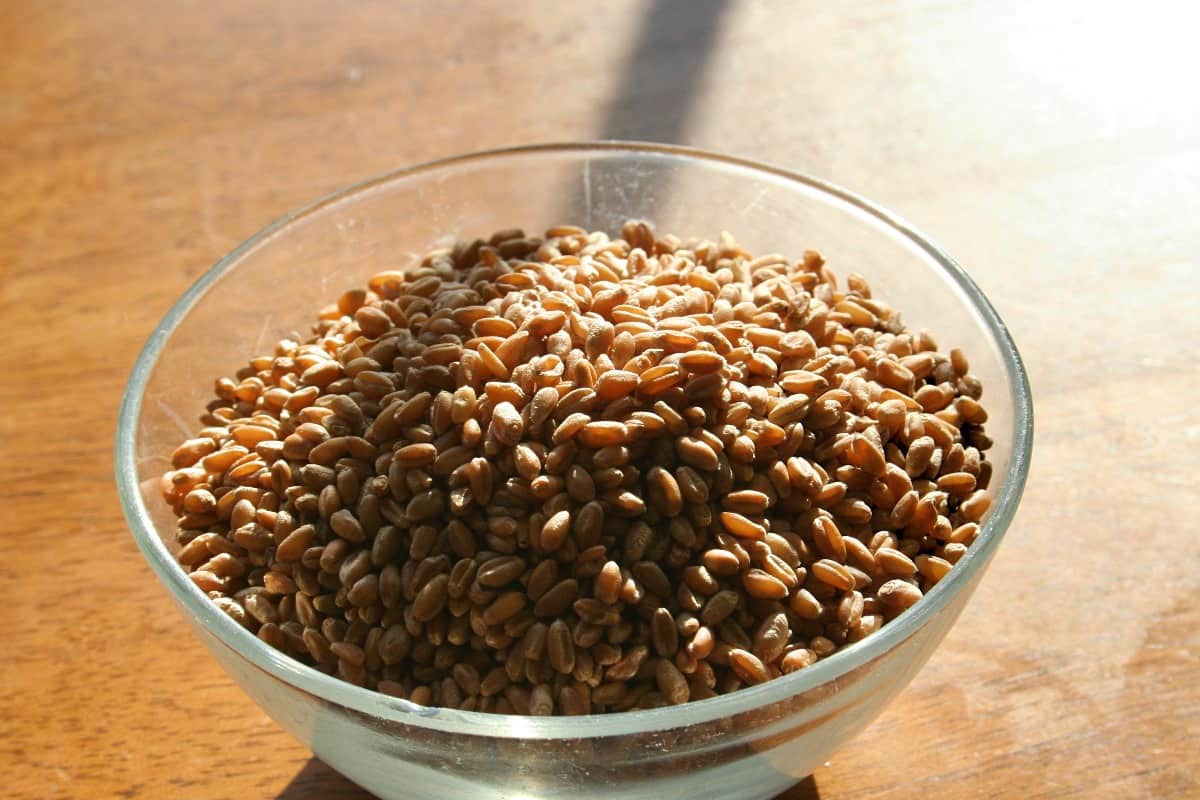Cooking wheat berries seems mysterious until you realize that cooking this whole grain is just like cooking any grain. Time, heat, water, and more time, and you’ve got a superfood packed with nutrition.
Here’s why learning about cooking wheat berries will change your mind about eating whole grains.
What Are Wheat Berries?
The first time I heard the term “wheat berries” I imagined something like a strawberry sitting on top of a stalk of wheat. Silly, I know, but the name really does conjure images of fruit rather than whole grain.
Wheat berries are, in fact, the entire, whole grain of the common wheat. Americans consume approximately 134 pounds of wheat per year, but most of that wheat is ground into white flour.
Wheat berries, on the other hand, are the actual whole grain wheat with the husk removed. Each ‘berry’ contains the bran, germ, and endosperm – an intact seed that can be sprouted, ground into whole wheat flour, or cooked and enjoyed as a whole grain.
It is this cooking wheat berries that introduced me to one of my favorite tasty grains.
Cooking Wheat Berries
Cooking wheat berries isn’t difficult. If you can make rice, you can make wheat berries.
I’ve cooked wheat berries in both my Crockpot and on the stovetop. Of the two techniques, I find that the slow cooker yields the tastiest wheat berries, but the stovetop method if the faster of the two.
What Do Wheat Berries Taste Like?
To me, wheat berries taste like a cross between barley and brown rice. They’re chewy, nutty-tasting, and have a slightly sweet taste to them.
What Can You Do with Wheat Berries?
Cooking wheat berries isn’t the only thing you can do with them. You can also sprout wheat berries and eat the green sprouts in salads. Another way you can enjoy wheat berries is to grind them at home with a countertop flour mill and use the flour in baking. It’s a great way to ensure fresh whole wheat flour for your recipes.

Cooking Wheat Berries: Crockpot Method
I use an old Rival Crockpot, a small one I picked up for $10 when Caldor (remember Caldor stores?) was going out of business. You can find slow cookers in Walmart or on Amazon. I’ve included links below the article if you need to find one.
Simply place 1 cup of wheat berries into the slow cooker. Add 2 1/2 cups of water and cover. Cook on high for 2 to 4 hours. I stir every two hours to prevent sticking. You’ll know when the wheat berries are done when they are soft and chewy but there is a little water left in the pot.
I pour the water and berries into a glass Mason jar, cover, and refrigerate. The berries absorb the water and plump up even further.
Cooking Wheat Berries: Stovetop Method
To cook wheat berries on the stove, you need a pot with a tight-fitting lid. Place 1 cup of wheat berries and 2 1/2 cups of water in the pot. Bring to a boil. Stir. Cover, lower the heat to simmer and simmer for 45 minutes. Check the wheat berries at the end of 45 minutes for doneness.
Wheat Berry Recipes
Wheat berries can be enjoyed cold in salads or warm like a breakfast cereal. There are recipes for salads, wheat berry grain bowls, and more. Here are a few of my favorite:
Greek Salad with Wheat Berries
Strawberry and Goat Cheese Wheat Berry Salad
Quick Wheat Berry Salad
This is my recipe for a quick wheat berry salad. Mix 2 cups of cooked, chilled wheat berries with one peeled and diced cucumber and 10 diced grape tomatoes. Dice basil into fine strips and add to the salad. Mix with 1 tablespoon (or more, to taste) balsamic vinegar. Chill, top with crumbled feta if desired.
Wheat Berry Nutrition
The red winter wheat berries I use in my cooking contain:
1/4 cup serving
Calories 140
Cholesterol: 0
Sodium: 0
Calcium: 2% RDA
Iron: 8%
Protein: 5 grams
Good source of: Fiber, B-vitamins, micronutrients

The following are affiliate links. We are a participant in the Amazon Services LLC Associates Program, an affiliate advertising program designed to provide a means for us to earn fees by linking to Amazon.com and affiliated sites. Thanks so much for being a part of Home Garden Joy!
Where to Buy Wheat Berries
I really like the Palouse brand of wheat berries. These are red winter wheat berries, grown in the United States, non-GMO, non-irradiated, and field traceable. They were easy to cook in a slow cooker (Crock Pot) as well as on the stovetop. They’ve retained their flavor in the organic, reusable bag, and cook up well into soft, chewy wheat.





